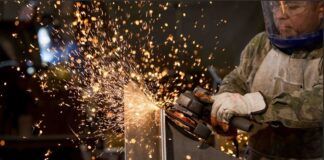“The boss will be doing safety observations today.”
What do you think your workers’ immediate reaction is to that statement? Unless you work in a family-owned business, it’s likely not positive—and maybe not even then. They are probably filled with dread—and it’s not because they’re unsafe workers or you’re a terrible supervisor. It’s because the collective experience has shown that this will probably be a waste of time for everyone involved.
 Safety observation visits from leadership don’t add any value, especially when they are a hurried attempt to meet a quota or check a box. Without an organized approach, in-field engagement probably doesn’t bring any positive change to the organization.
Safety observation visits from leadership don’t add any value, especially when they are a hurried attempt to meet a quota or check a box. Without an organized approach, in-field engagement probably doesn’t bring any positive change to the organization.
What does an organized approach to in-field oversight look like? For starters, you need to know when and how to engage.
When is the right time for a safety observation? Identifying what NOT to do might be a good place to start. Does this look familiar? You do indeed have to meet a set number of field observations. You spend the week chained to your desk by emails, conference calls, and all sorts of administrative work. By the end of the week, there is little time for a thoughtful approach to engaging with the workers.
It becomes nothing more than a drive-by event. Just enough to check that box.
Find something to correct, find something to reinforce, go back to your desk, and put it on the report. It’s not great, but it’s what you have to do with your limited time.
You need to schedule the time and make it sacred. Look at the work schedule and determine which activities are going to give you and your workers the most bang for the buck. Commit to that time and try not to waiver. There will be shifting priorities and emergent work, but make missing a high-value engagement the exception; not the norm.
Now that you have the “when” carved out, start preparing for “how” you are going to engage. There are any number of approaches, but some basic principles tend to hold true. To keep it simple, so you can focus on adding value rather than getting bogged down in the process. We use the acronym COACH: Communicate, Observe, Acknowledge, Change, and Help. There is a great amount of detail around of each of these attributes, but in the interest of brevity, we will cover the 10,000-foot view of each of one.
Communicate: Is the coach communicating to the team job-specific expectations, the big picture importance of their work, specific stop-work criteria, and his/her role in ensuring safety?
Observe: Is the coach looking at behaviors (not results), recognizing areas for improvement, and staying in his or her leadership role, rather than grabbing a tool and “showing ’em how it’s done”?
Acknowledge: Is the coach recognizing proper behaviors with specific, timely, and personal positive reinforcement?
Change: Is the coach leading organizational change by promoting the use of human performance standards and expectations to improve the overall team?
Help: Is the coach helpful by listening to concerns, asking about job challenges, and working towards solutions?
Effective management is a critical part of the process for true culture change. The front-line leader is the person in the best position to see the worker behaviors and recognize the latent organizational weaknesses that need to be addressed. They are the glue that holds it all together and need to be given all the tools necessary to ensure continued success.
Toolbox Talks offers quick insights and thoughts to use for your toolbox (tailboard) talks. Dave Sowers is a founding member of Knowledge Vine, a veteran-owned human performance training and consulting organization that strives to reduce the frequency and severity of human errors in the workplace. He has almost 30 years of experience in power generation and the utility industry. He is a veteran of U.S. Navy Nuclear Power Program and holds a bachelor’s degree in resources management and a master’s degree in both management and emergency management and homeland security.



